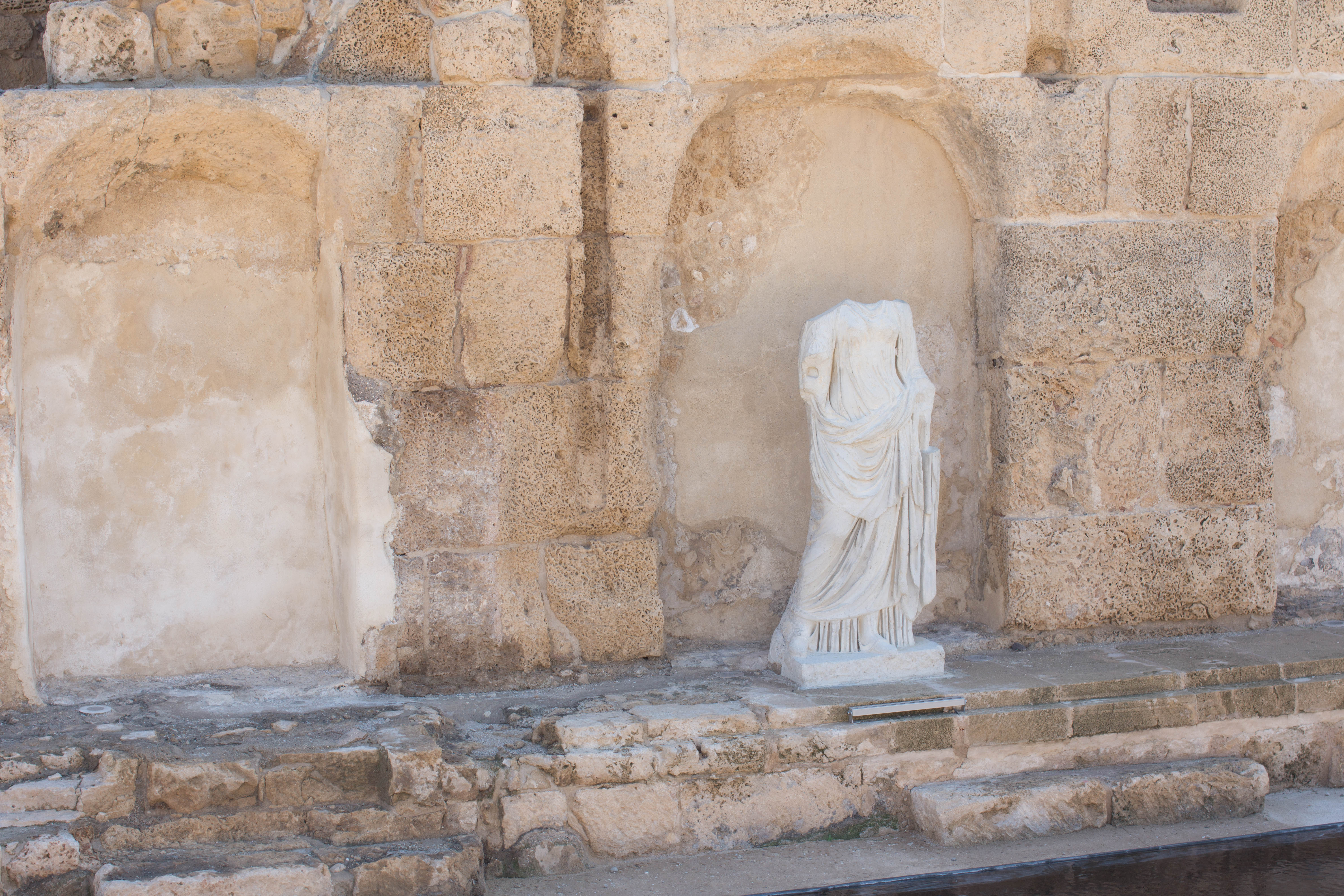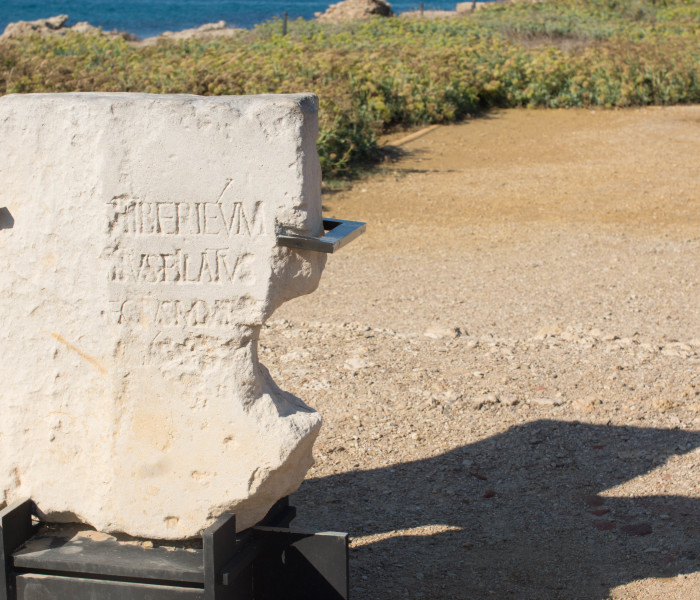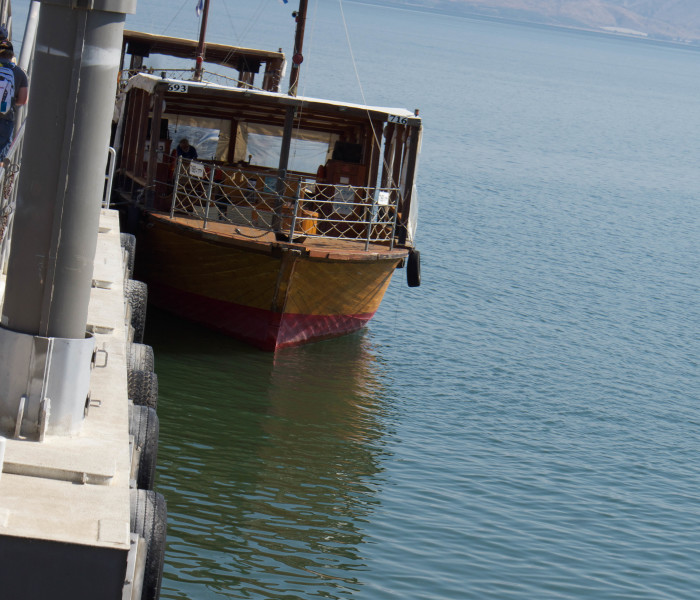Hebrew: Qesarya, Keisarya / Arabic: Kaisariyeh / Bible: Caesarea
Coordinates: 32°29′55″N 34°53′29″E / Elevation: 15
» Read more » less Caesarea was an important port in New Testament times, with a city that rivaled any in the Roman world. Originally named Pyrgos Stratonos (Strato’s Tower – Antiquities Book XV:8.5, 9.6), the city and port was enlarged by Herod the Great, who spared no expense to make it a showcase of the Judean coast.
Caesarea was an important port in New Testament times, with a city that rivaled any in the Roman world. Originally named Pyrgos Stratonos (Strato’s Tower – Antiquities Book XV:8.5, 9.6), the city and port was enlarged by Herod the Great, who spared no expense to make it a showcase of the Judean coast.
Caesarea is mentioned 17 times in the New Testament. It was the home of the » Read more » less centurion, Cornelius, whose household Peter baptized (Acts 10:1-48),
centurion, Cornelius, whose household Peter baptized (Acts 10:1-48),
inaugurating acceptance of gentiles into the movement known as “the Way” (Acts 9:2; Acts 19:9; 23; 24:14, 22). 
Paul is mentioned several times as having been in Caesarea (Acts 9:30, 18:22, 21:8), most notably giving defense of his faith to the Roman governors, Felix and Festus, who held court in Caesarea. Paul was imprisoned in Caesarea for about 2 years before making his final voyage to Rome (Acts 24:27, 27:1-2). Caesarea was also the place where Herod Antipas was slain by God (Acts 12:23).
Why we stopped at Caesarea:
» Read more » less 1) As noted above, the importance of this site to gentile Christianity cannot be overstated, as the baptism of Cornelius and his household reflects apostolic acceptance (at God’s direction) of Gentiles as fellow-heirs in salvation. Put simply, what happened here laid the ground-work for goyim to receive the Gospel. Hallelujah!
1) As noted above, the importance of this site to gentile Christianity cannot be overstated, as the baptism of Cornelius and his household reflects apostolic acceptance (at God’s direction) of Gentiles as fellow-heirs in salvation. Put simply, what happened here laid the ground-work for goyim to receive the Gospel. Hallelujah!  2) St Paul’s defense of Christianity and eventual departure from this place for a journey that led to martyrdom is a great reminder that our salvation came at the expense of a lot of good people who gave all to get the message to us. It’s good to pause here to thank God for people like Saul of Tarsus! 3) The reconstructed amphitheater, hippodrome and aqueduct are some of the best examples of Roman architecture in Israel. The might that was Rome is still pretty impressive here. Take it in. Enjoy!
2) St Paul’s defense of Christianity and eventual departure from this place for a journey that led to martyrdom is a great reminder that our salvation came at the expense of a lot of good people who gave all to get the message to us. It’s good to pause here to thank God for people like Saul of Tarsus! 3) The reconstructed amphitheater, hippodrome and aqueduct are some of the best examples of Roman architecture in Israel. The might that was Rome is still pretty impressive here. Take it in. Enjoy!
Caesarea in history:
 Jewish historian Flavius Josephus, who notes that the revolt of 66AD began, in part, by events that took place in Caesarea (Jewish War,II.17-18), wrote at length about the city’s splendor and importance. Caeserea was also the See (region of authority for a Church bishop) of Eusebius Pamphilius, who is known as the first historian of the Church.
Jewish historian Flavius Josephus, who notes that the revolt of 66AD began, in part, by events that took place in Caesarea (Jewish War,II.17-18), wrote at length about the city’s splendor and importance. Caeserea was also the See (region of authority for a Church bishop) of Eusebius Pamphilius, who is known as the first historian of the Church.
____________
Aqueduct Ruins (archaeological site)
Coordinates: 32°30’46.35″N 34°53’48.01″E / Elevation 15
A major source of water for Caesarea Maritima came from outside the city via aqueducts. We stopped briefly to view a section of the largest of Caaesarea’s aqueducts which ran a distance of about 6 miles from springs near Mt Carmel. This particular aqueduct was enlarged at some point in its history, adding a second channel for water from the springs.
View the Caesarea Slideshow below (Click on the image to view bigger sizes):
Categories: Locations
Tags: Caesarea.









Comments are closed.